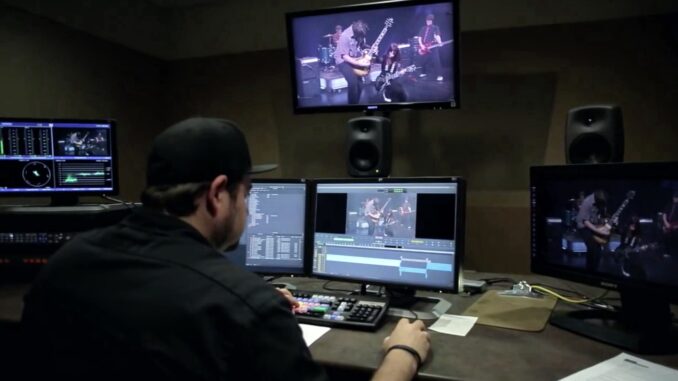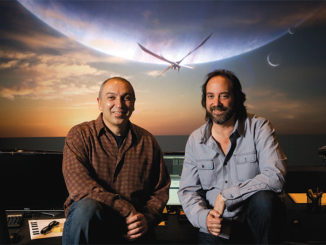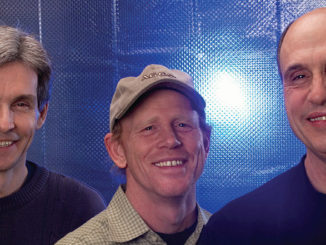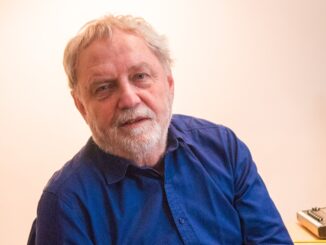
by Paul Claydon
From America’s Got Talent to Dancing with the Stars, movie trailer-style cold opens or superteases have become a staple of shiny- floor talent shows. The short, fast-cut montages set to cinematic music are meant to whip the audience — we hope — into a state of fevered excitement and boost viewers in the constant battle for ratings.
The style has become well known: A blinding ash of white, ominous music swells. Lines of contestants await their fate. Performances from the previous night flick by, as judges praise and berate. Music reaches a crescendo, a portentous ominous voice booms, “Who will be going home tonight?”
What we do doesn’t achieve the kudos that our drama or cinema brothers and sisters do, but our work is still seen by millions of people all over the world and its technique is definitely worthy of more study.
Superteases are the storefront of the show; they serve several purposes: a deep tease of the entire season, a recap of previous events and a preview of the night’s program itself. As an editor, they can be a real struggle until you get the hang of them, especially with the tight turnaround times of live TV. They are literally the first one or two minutes of the entire show — not a job for the faint-hearted.
My first taste of them was on the first series of The X-Factor UK in 2004. The show introduced this new style of tease to Britain with movie trailer-style music used to amp up the drama. America’s Got Talent on NBC premiered in the summer of 2006 and opened in a similarly cinematic manner. This wasn’t surprising, as many of the same creatives were behind both shows.
However, “cinematic” doesn’t necessarily mean fast cuts; some of the most effective superteases are slow — but always dramatic and always just a little bit…well, let’s face it, over the top. But that’s all part of their charm, isn’t it?
Although there are countless books and articles about the art of editing as a whole, reality editing is a different beast. There isn’t much written about it as a technical process, let alone as any kind of art. But we reality editors shouldn’t sell ourselves short. What we do doesn’t achieve the kudos that our drama or cinema brothers and sisters do, but our work is still seen by millions of people all over the world and its technique is definitely worthy of more study.
When creating a supertease from scratch, I follow five steps: the brief, show content, music, pacing and a strong ending.
The Brief. Often there is no particular brief for a supertease; the editor must work with the producers to come up with an idea. Sometimes an executive will provide a voiceover script, which becomes a fantastic skeleton for the edit.
Show Content. I string out all content from the show that I want to use. This may include amazing performances, fun interview bites or even something as simple as a whip pan that could be used as a transition. I tend to be extremely self-critical of this string-out; it should have outstanding moments that really punch viewers in the face or make them feel something. If it doesn’t, I know from experience that the piece just won’t work.
Music. Music is the glue that will hold the whole thing together. Whether it’s from a music library or a recent commercial hit, the track will dictate the entire drive of the edit. Personally, I’m more inclined to use neo-classical music tracks as well as classical-electronic hybrids, which provide the perfect rhythm of ups and downs, slow and fast moments that are amazing to cut to.
Pacing. Choosing the correct pace is vital. It can’t be too fast because the audience needs to understand the message, but it also can’t be too slow. Bear in mind that Nielsen provides TV executives with minute-by-minute breakdowns of eyeballs for their broadcasts, making it glaringly obvious if a supertease has the masses switching channels.
As the piece starts to take shape, problems become extremely obvious. Content that doesn’t work starts to stick out like a sore thumb. If it’s boring and has nothing to say, it will never work. Most likely the executives will end up dropping it from the show completely — which doesn’t make for a happy editor.
Ending. The most discussed and changed element of the edit, the ending is the big bang
to which every edit leads; it’s the Rome of all of your roads. You must have a strong pay-off for the emotional journey that you’ve led your audience on. Your pacing, music and shots should all crescendo in a moment of pure excitement — money shot. It has to work.
After eight years, cutting this type of supertease is still exciting for me. They’re an opportunity to reinvent the way we present and package a show every time it airs. As audiences continue to become ever more fragmented, it’s increasingly more difficult to make them put their phones down, look up and stay tuned. But it’s exactly this challenge that keeps me going back for more.





